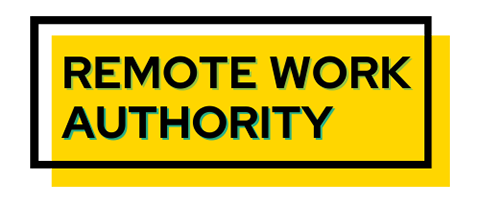Even those who work at home sometimes prefer remote working in a coworking space. Renting a shared desk or office offers convenient office space, separation of work and home, opportunities to collaborate, and an atmosphere that spurs productivity.
Remote workers often do their jobs at home, but coworking spaces are a viable alternative for those who like more interaction with people. Offering either an open space with desks or private offices, coworking sites provide business services and equipment along with someone to have coffee with.
For many, these sites have proven to be a location where it’s easier to be productive than either working at home or in the office. These spaces lessen the loneliness of being a remote worker without the distractions of office politics.
Table of Contents
Advantages Of Remote Working In A Coworking Space
Working at home works out best when a person has minimal distractions. Having to deal with children or infirm adults, pets, interruptions, and the inviting lure of online shopping, social media, and game playing can fritter away precious work time.
Leaving home to go to a separate coworking space helps many workers stay on track. Even people with an atmosphere conducive to work at home occasionally need interaction or change. Going to the coworking space can be a nice change of pace. It is more formal than home or a third space, a coworking space introduces some needed structure.
Coworking spaces can be pricey according to where you’re located and what you need. You can rent by the day or month, secure a desk or an office, and arrange for it to be shared or private (“dedicated.”) According to Buldremote.com, the options with their costs for the top 30 cities
- For a monthly dedicated desk: $367 (range: $161 – $561)
- For a monthly dedicated office: $682 (range: $448 – $1,298)
- For a day pass for shared space: $29 (range: $17 – $41)
- For a week pass (five days): $103 (range: $59 – $159)
Remote workers depend on having a laptop with reliable Internet to earn their money. They might have a printer, headphones, and other small pieces of equipment, but they are less likely to have access to a copier, answering services, or conference room. Coworking space typically has high-speed printers, copy machines, and other services unavailable at home.
Other people in the coworking space offer occasional conversation, while the Internet can provide the same distractions as at home. However, when people are paying money for coworking space, they tend to be more motivated to stay on track there as everyone feels the same pressure to accomplish tasks at work. The atmosphere is designed to be relaxing yet conducive to productivity. Also, there are usually pastries!

Productivity Soars In Coworking Spaces
Fellow workers and the Internet can be distracted anywhere, but according to the Harvard Business Review, people are more productive in coworking situations for several reasons.
- Since coworking colleagues come from different companies and projects, there is little competition, internal politics, or trying to present a good face to the boss. Each person has a strong work identity.
- Members sign a coworking manifesto that stresses values such as collaboration, community, learning, and sustainability. People are often more willing to help each other out with their unique skill sets.
- Workers have more control over their jobs as coworking centers are often open 24/7, which allows for middle-of-the-day errands and workouts. Yet, most coworking members develop a personal structure that encourages them to be there.
- Working away from the office can generate new ideas from seeing how others outside their company work. It helps individuals work more effectively and gives them new perspectives to take back to their offices.

Spaces Foster Sense Of Community
Big players in the Coworking sector confirm similar values, though each coworking space has its own flavor. At Grind, a coworking network popular in New York and Chicago, Marinos, head of marketing, community management, and member services, shared in the Harvard Business Review that, “When it comes to cultivating our community at Grind, we’re all about the human element. We consider ourselves as much a hospitality company as we do a workspace provider. Our staff knows all of our members by name and profession, and we’re constantly facilitating introductions between Grindists.”
Competitor WeWork stresses that it wants to be a “place you join as an individual, ‘me,’ but where you become part of a greater ‘we.'”
Camaraderie develops among workers, leading to partnerships between the coworking site and its customers. For example, programmers at Menlo Innovations in Ann Arbor, MI, worked with startups in early-stage entrepreneurs, and the Menlo founders Rich Sheridan and James Goebel expanded their coworking space by 7,000 square feet to accommodate this arrangement.

History Of Coworking
How did coworking come about?
The first coworking started in 1995 in Berlin, Germany, by 17 German engineers who wanted to bring together computer enthusiasts. Called a “hackerspace” at the time, their enterprise C-base offered equipment for techies.
By 1999, the name “coworking” was coined by American game designer and author Bernard DeKoven. The term emphasized a way of working rather than the location and was applied where people collaborated to work together.
The concept of coworking spread to Austria in 2002, and by 2005, coworking sites proliferated in cities like London and San Francisco. Brad Neuberg opened the San Francisco Coworking Space that attracted workers. Within a few years, there was Brooklyn Coworking in New York City (2006), Jelly in Austin and Phoenix (2007), and a variety of companies around the country with names like New York City, IndyHall, OfficeNomads, Impact Hub, Betahaus, Workbar, and Urban Station,
In 2008, Adam Neumann and Miguel McKelvey opened Green Desk in New York City, which by 2011 morphed into We Work, a national and international chain of coworking sites.
Prior to the pandemic, there were over 19,000 coworking spaces around the globe by 2019. When workplaces closed down for COVID-19, companies that provided coworking spaces changed their layouts to allow Socially distanced workers to do their jobs in person, while other firms offered digital coworking.
Since then, coworking has continued to grow. Ironically, We Work, one of the pioneers of coworking, is currently facing financial woes and may shut down its operation. Before the pandemic, they amassed a lot of space but lost customers during the shutdown. Even though their vacancy rates shot back up to 72% by August 2022, they are still losing money. Coworking is now a respected alternative way to work, and other companies are prospering. Many businesses are viewing coworking space as an alternative to long-term leases.
Getting the Most Out Of Your Coworking Space
Coworking spaces offer a great place to get work done. However, to make them the productivity hubs they can be, coworking members must follow some basic rules. Facilities such as We Work make these specific suggestions,
1. Greet Other Coworkers
Saying hello is a neighborly thing to do. You don’t need to make small talk with everyone; a “hello” in passing makes the space pleasant for all.
2. Respect Boundaries
Coworking spaces are meant to encourage collaboration, but people still have deadlines and need time to work individually. Respect the boundaries of other workers – and set some for yourself that you maintain.

3. Respect Space
Whether you have a dedicated office, a dedicated desk, or share a common area, don’t be a space hog. Refrain from spreading your materials into the workspace of others. While certain amenities, such as the coffee pot, printer, copier, meeting rooms, etc., are available for everyone, don’t monopolize these facilities, especially during peak hours. If you have a big project where you need to use any facility for an extended time, plan your visit to the coworking space for a time when it’s less busy.
4. Keep The Noise Down
If coworkers wanted loud, raucous noise, they would probably work at home when their kids were there. They come to the coworking space so they can concentrate. Keep the volume down when you’re having conversations. Take your personal conversations to the coffee room so you don’t disturb those not ready for a break.
5. Respect The Time
Unless you join the 24/7 coworking spot, most facilities have ours where they are open. Plan to get there in enough time to do your work. If you’ve booked a conference room or other facility, keep to the time schedule as others may have booked time; cancel if your plans change.

6. Keep The Area Neat
After using the space, remove all your personal items, throw away coffee cups, and sanitize the area. You are not the cleaning staff for the facility, but you should avoid leaving a mess anywhere in the facility.
7. Stay Home If You’re Sick
Whether you have a cold or flu, Covid, or some other illness, don’t bring it with you to the coworking space. If you’re sick, stay home to prevent infecting other people.
By following a few common sense rules, you can make the coworking space a wonderful investment for all.


